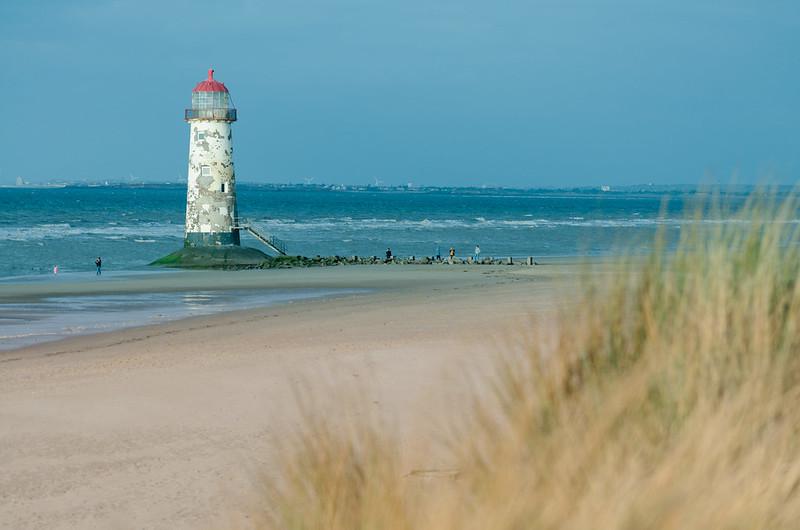The Dee Estuary
Perched on the most northerly tip of Wales, the Point of Ayr is situated at the mouth of one of the most important estuaries for wildlife in the whole of Britain – the Dee Estuary. While at first glance the area might seem to be a barren swathe of mud, it is actually rich in life and has some of the most fertile land anywhere in the country. The estuary itself covers several thousand hectares and stretches from the north-east corner of Wales to Merseyside and Cheshire in England.

There are many spots around the estuary that are great for seeing wildlife and the area as a whole is internationally recognised for its importance to bird species. However the Point of Ayr is a prime destination, providing visitors with a little bit of everything that the Dee Estuary has to offer. It’s a rather remote part of the estuary and suffers from less human disturbance as a result. The area is maintained as an RSPB reserve and wildlife thrives throughout the many habitats present. Part of the Point of Ayr forms the beach at Talacre – constituting miles of golden sand backed by some fantastic sand dunes. The point is also home to a lighthouse, which stands right on the beach itself, adding to the list of things to see at this coastal destination.
Nattering Away
One of the more interesting species to call the Point of Ayr home is also one that is easy to overlook. A rather understated creature in terms of appearance, the Natterjack Toad more than makes up for it with its vocal presence. The species is known for emitting incredibly loud calls that can be heard for miles around during the breeding season, a behaviour that gives the species its name. It’s only the males that are capable of producing the sound – described as an elongated croak – and they do so by amplifying the noise using the vocal sacs located under their chins.

The toads will often congregate in the evenings to begin their performances and it can be a great experience to encounter while out and about. You’re less likely to see them than hear them, however they can be distinguished from other frogs and toads by their tendency to run instead of hop. Unfortunately, the species is now very rare in the UK and there are only a few places where the toads can be found. It lives in areas of sandy heath that are accompanied by pools of water and the loss of these habitats has contributed greatly to the decline of the Natterjack Toad in Britain. Luckily, the Dee Estuary remains a stronghold. Top tip for encountering Natterjack Toads at the Point of Ayr – visit on a still evening in Summer for a chance to hear their calls.
Birding Highlights
The birdlife of the Point of Ayr is far more obvious than the toads, with thousands of birds being present at any one time. A bird hide is located on the reserve, adjacent to an area where wading birds like to roost at high tide. This can be a great place to view the birds without fear of disturbing them. Many common wader species choose to roost here, including Oystercatchers, Godwit and Sandpipers. Further out across the water, you can expect to see Strom Petrols, Gannets and large numbers of Tern. Many birds choose to breed on the reserve and the months from late Spring into Summer can be a great time to visit for this reason.
There is much more to see besides the birdlife, however. Be sure to keep an eye out for Grey Seals bobbing offshore or the fins of Harbour Porpoises breaking the water. The Summer months are also a great time for flowering plants, which will plaster the areas behind the dunes and will in turn attract many insect species such as butterflies and moths. The Point of Ayr is therefore ideal for wildlife watchers and is a particularly good destination to visit for birdwatching and sea views.
